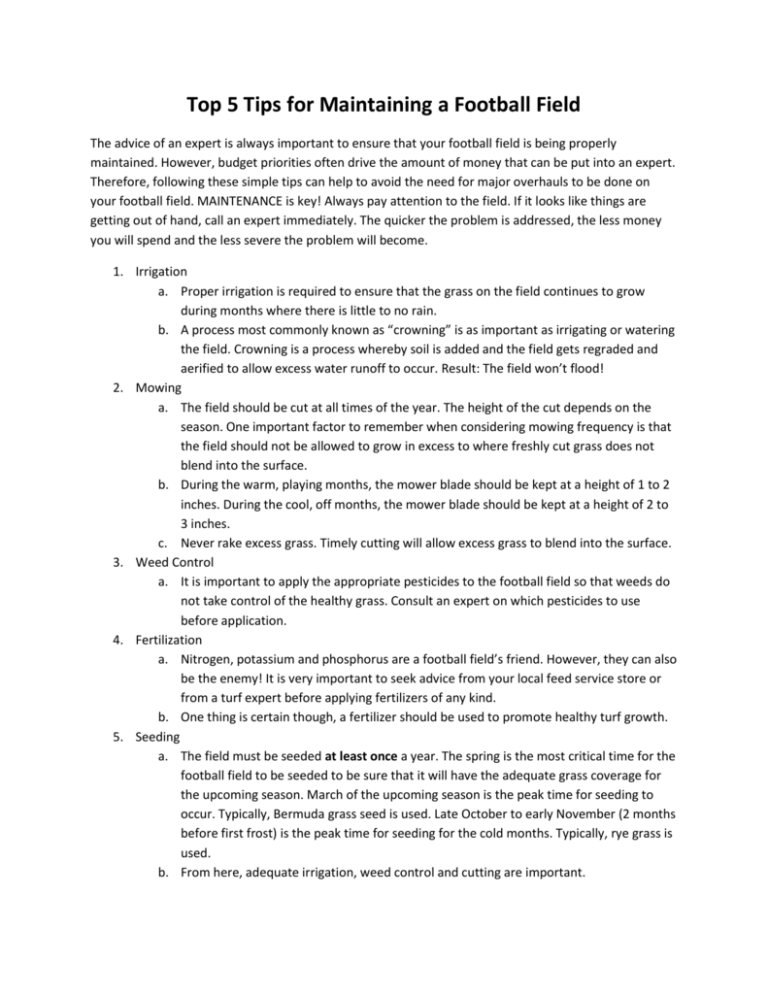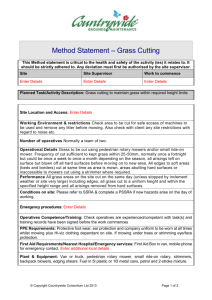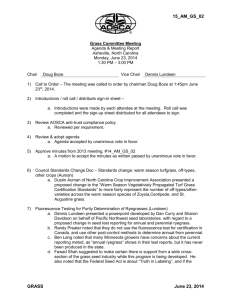FootballFieldMaintenance
advertisement

Top 5 Tips for Maintaining a Football Field The advice of an expert is always important to ensure that your football field is being properly maintained. However, budget priorities often drive the amount of money that can be put into an expert. Therefore, following these simple tips can help to avoid the need for major overhauls to be done on your football field. MAINTENANCE is key! Always pay attention to the field. If it looks like things are getting out of hand, call an expert immediately. The quicker the problem is addressed, the less money you will spend and the less severe the problem will become. 1. Irrigation a. Proper irrigation is required to ensure that the grass on the field continues to grow during months where there is little to no rain. b. A process most commonly known as “crowning” is as important as irrigating or watering the field. Crowning is a process whereby soil is added and the field gets regraded and aerified to allow excess water runoff to occur. Result: The field won’t flood! 2. Mowing a. The field should be cut at all times of the year. The height of the cut depends on the season. One important factor to remember when considering mowing frequency is that the field should not be allowed to grow in excess to where freshly cut grass does not blend into the surface. b. During the warm, playing months, the mower blade should be kept at a height of 1 to 2 inches. During the cool, off months, the mower blade should be kept at a height of 2 to 3 inches. c. Never rake excess grass. Timely cutting will allow excess grass to blend into the surface. 3. Weed Control a. It is important to apply the appropriate pesticides to the football field so that weeds do not take control of the healthy grass. Consult an expert on which pesticides to use before application. 4. Fertilization a. Nitrogen, potassium and phosphorus are a football field’s friend. However, they can also be the enemy! It is very important to seek advice from your local feed service store or from a turf expert before applying fertilizers of any kind. b. One thing is certain though, a fertilizer should be used to promote healthy turf growth. 5. Seeding a. The field must be seeded at least once a year. The spring is the most critical time for the football field to be seeded to be sure that it will have the adequate grass coverage for the upcoming season. March of the upcoming season is the peak time for seeding to occur. Typically, Bermuda grass seed is used. Late October to early November (2 months before first frost) is the peak time for seeding for the cold months. Typically, rye grass is used. b. From here, adequate irrigation, weed control and cutting are important.











